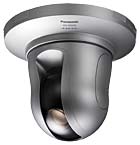‘Sea Change’ for Enterprise Video

Smile, everyone! There are an estimated six million video surveillance cameras in the U.S. and four million in the U.K. According to the Lehman Brothers Security Annual 2006, video surveillance is one of the largest and fastest-growing segments in the security industry, with a market size of six to seven billion dollars and annual growth rates of ten to 20 percent.
What is driving this growth and what challenges and opportunities does it create for chief security officers at myriad enterprises?
A panel of representatives from leading video companies gave their perspective on these questions at the Securing New Ground conference in New York City late last year. Participants were Craig Chambers, president and CEO, Cernium Corp.; John Humphrey, vice president of Video Infrastructure Solutions, Verint Systems; Scott Schafer, senior vice president of Marketing and North America Sales, Pelco; and Andrew Teich, president, Commercial Visions Systems, FLIR Systems.

VIDEO GROWTH DRIVERS
One growth driver is escalating global threat levels. As Andrew Teich stated, “Today we face a new breed of bad guys who are better equipped and more focused. The stakes have gone up, too. It’s not just about financial loss. It’s also about the safety of our workers, community and even our social fabric. Many security professionals are re-evaluating the question, ‘When is it okay to risk missing a threat?’”
A second growth driver is convergence. Security Industry 2006 notes that, as video surveillance has transitioned from analog to digital technology, and as manufacturers bring more IP-based technologies to market, there is increased use of networks and an open IT infrastructure to distribute and manage video.
Together, these growth drivers have opened the door to:
- proactive security solutions that can detect potentially threatening anomalies more efficiently, and
- an increase in the perceived value of using video in non-security applications in markets such as industrial, transportation, education, health care and retail.
To capitalize on this growth, the security industry must provide integrated, end-to-end video solutions that deliver on the promise of increased business value across the enterprise. John Humphrey provided a checklist for “IT co-existence,” stating that, in today’s market, video must be:
- Standards-based: Leverage and build on existing, open IT standards.
- Network aware: No bandwidth hogging that slows IT and performance.
- Easy to integrate and manage: Out-of-the-box integration with other security and enterprise systems.
- Flexible, reliable, scalable: Store and manage video like all other enterprise data.
Scott Schafer pointed out many new security-over-IP technologies, including IP matrix, thermal imaging, advanced biometrics, video analytics, wifi/wmax and API-SDK. “All of these will be integrated to run over IP networks,” he noted, “and all have the potential to deliver even more value to the end user.”

FROM IMAGES TO INTELLIGENCE
Video, according to Craig Chambers, “is a dauntingly complex data form that is difficult to characterize and sort. Because we don’t know how to handle it, we’ve been told that the best solution is to store it all.” As a result, the bulk of video spending today is for storage. But video is not providing the higher-value information demanded by today’s applications, such as identification and classification, behavior, environmental conditions, and relationships among objects.
Extracting this information has traditionally been the domain of guards at monitoring stations. But more guards watching more video from more cameras is not leading to better security. Extensive physiological research has shown that humans are not equipped to notice anomalies in video images in real time or when retrieved for review. As a result, enterprises are questioning the value of investing millions in cameras in hopes of catching a single event from time to time.
Video analytics adds value to the video investment by providing actionable intelligence for better decision making. “Combined with video storage and management techniques,” described Humphrey, “video analytics can reduce camera bandwidth use, increase threat detection and create value-added enterprise-wide video applications in areas such as marketing, operations and customer service.” This is not pie-in-the-sky. Panelists described real world examples of video’s demonstrated business value:
Sir Terry Leahy, chief executive of U.K. retailer TESCO, was quoted in the Oct. 4, 2006 Timesonline as saying that installation of thermal-imaging cameras in every store to count customers - and help improve service - had contributed to better than expected sales. Schafer told of an end user committing to a one percent revenue improvement by using an advanced video security system.

NEW ROLE FOR THERMAL
Another technology, thermal imaging technology, is evolving to provide increased business value. Once a tool for night vision, the technology now provides a high level of situational awareness in all environmental conditions from near- to long-range. Reduced image clutter and increased contrast improve the probability of detection for automated analytic-based systems. The combination of thermal imaging for detection and conventional imaging for identification can provide the optimal solution for many end users.
Thermal technology deployment is limited currently by two factors. The first is that, although there is steady migration to IP interconnectivity, many customers are somewhere on the continuum of this migration from legacy analog to video-over-IP infrastructure. This has made companies, such as FLIR Systems, start thinking of its products not as cameras, but as complete inter-operable sensor sub-systems.
The second limiting factor is cost, particularly in shorter-range applications. Thermal costs more than CCD-based sensors. The adoption of thermal technology in other sectors, such as automotive, is creating economies of scale. “These are the first significant steps to bringing the advantages of thermal technology to a much broader subset of the security market,” noted Teich.

LOOKING AHEAD
Organizations today are leveraging captured video to increase business ROI, improve operational efficiencies and collect marketing data and business intelligence. “We’re just at the start of an enormously dynamic and exciting market,” summarized Schafer, “and just beginning to see ways these systems will deliver business value beyond that of traditional security applications.”
Concluded Humphrey: “This sea change in video security provides a wealth of opportunities, but demands interoperability and requires our industry to develop new skills and new ways of working with IT.”

SIDEBAR 1: Craig Chambers
President and CEO
Cernium Corporation
Chambers is a veteran of the advanced video security and management consulting industries. He was a director in technology management consulting for SRI International, and managing director of the Security & Surveillance Group of SRI subsidiary, Sarnoff Corporation. As President and COO of Sarnoff’s Pyramid Vision spin-off, he guided commercialization of the company’s intelligent video security products, leading to their acquisition by L-3 Communications.
Cernium, headquartered in Reston, Vir., develops behavior recognition software and systems for the security industry, focusing on real-time video analysis. The company serves customers in government, health care, transportation, hospitality, education and other sectors.

SIDEBAR 2: John Humphrey
Vice President of Video Infrastructure Solutions
Verint Systems Inc.
Before joining Verint, Humphrey co-founded and served as the Managing Director of Braddahead, a developer of advanced digital recorders. Prior to that, he was Group Managing Director and CEO at Dedicated Micros Computers Group. He also served in various sales and marketing positions with IT industry leaders, including Unisys, Fujistu-ICL and AlliedSignal.
Verint, headquartered in Melville, New York, provides analytic software-based solutions for security and business intelligence. Verint software generates actionable intelligence through the collection, retention and analysis of transmissions from multiple communications networks. Verint is a subsidiary of Comverse Technology, Inc.

SIDEBAR 3: Scott Schafer
Senior Vice President, Marketing and North America Sales
Pelco
Schafer is responsible for marketing Pelco products and solutions through global, national and regional sellers. Before joining Pelco, Schafer was Senior Vice President of Sales, Marketing and Services for Reynolds and Reynolds Co., a computer systems and software provider to the automotive retail and OEM market. He also held a number of senior positions at NCR Corp.
Pelco, headquartered in Clovis, Calif., is the largest video surveillance company. Pelco develops and manufactures video security systems and supporting equipment and is dedicated to satisfying customers. The company offers a complete line of cameras, enclosures, positioning systems, network video products, matrix systems, DVRs and other video security electronics products.

SIDEBAR 4: Andrew Teich
President, Commercial Vision Systems
FLIR Systems, Inc.
Teich is a pioneer in thermal infrared technology. He was heavily involved with the transition of thermal technology from the military to industrial and commercial markets. Prior to his current position, Teich held similar positions in FLIR’s Government and Thermography business. He was a principal of Inframetrics Inc., which was acquired by FLIR in 1999.
FLIR is headquartered in Portland, Ore. The company designs, manufactures and markets thermal imaging and stabilized camera systems for thermography and imaging applications, including manufacturing process control, airborne observation and broadcast, drug interdiction, surveillance and reconnaissance, navigation safety and ground-based security.
Looking for a reprint of this article?
From high-res PDFs to custom plaques, order your copy today!





